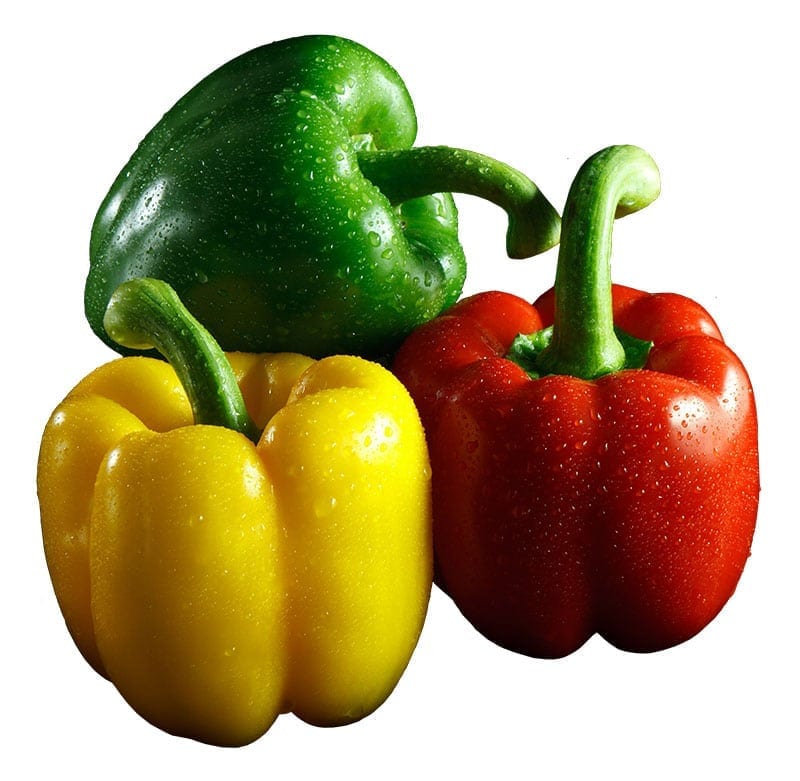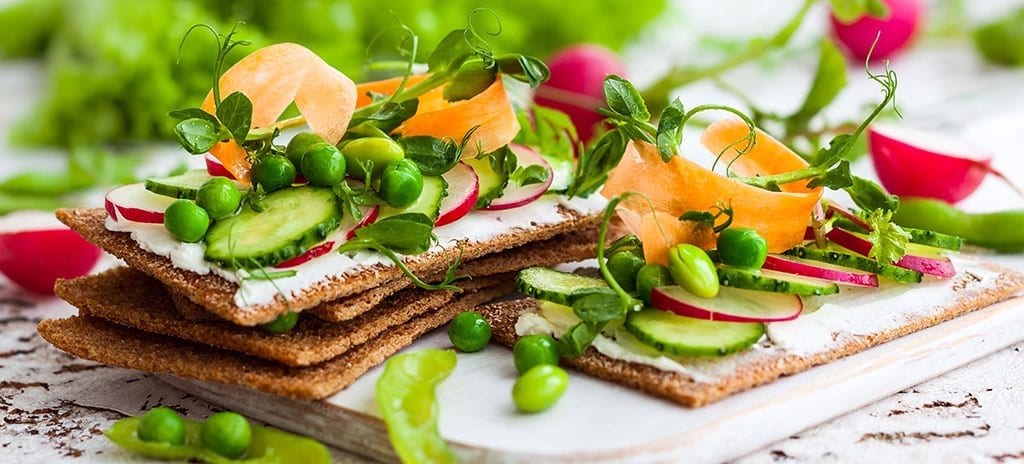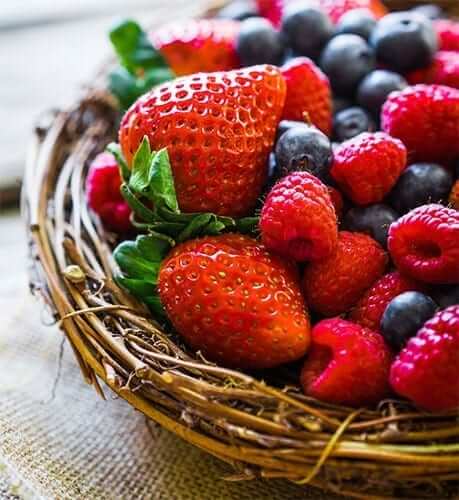Healthful meal planning is one of the main priorities for diabetes control. You need to understand the basics of a diabetes meal plan since there is no one specific “diabetes diet.” No health professional will give you a “tear off diet sheet” for eating with diabetes. If they do, find another reputable source for diabetes nutritional information. More and more physicians are understanding that each person with diabetes may require their own individual eating plan.
How do I start healthful eating?
Eating properly with diabetes should give you lots of great choices, especially if you keep it simple.
- Remember to always include lean protein, whole grains, low-fat dairy, fresh vegetables and fruits and plenty of plain water for proper hydration.
- After learning the basics of proper eating, start adding foods that contain high amounts of vitamins, minerals, fiber and antioxidants. These are usually plant based foods.
- Good choices are especially helpful in avoiding blood sugar spikes; this should become a high priority. Constant spikes in blood sugar from poor food selection, eating highly processed foods and consuming enormous portions will increase daily numbers along with your 3-month A1C readings.
- Eventually, high uncontrolled blood sugars can lead to a multitude of diabetes complications- heart disease, eye, kidney and nerve problems, which no one really wants.
Why is springtime a great time to try new foods?
- Spring is a great time to adjust your eating plan since there are now fresh flavors, bright colors and lovely aromas of the new seasonal foods. Most of us are looking forward to more outdoor living, using the grill and eating fresh, light meals. Everyone would like to boost their energy levels, immunity, mood and memory capacities with the change of seasons. Let’s look at fresh and tasty options to include in your springtime menu food planning.
- Most of you can buy these foods year-round from places outside our country, available in cans or in the freezer section, but realize they will surely taste better and more flavorful in the spring when you can purchase these foods fresh.
- Look for the latest offerings at specialty grocers, local farmers markets, farm stands and home gardens. Enjoy these springtime food choices at their peak of freshness. Nothing listed is extremely expensive or difficult to locate, so enjoy these superb springtime food choices!
Heart Healthy Pineapples
Available year-round, pineapples are sweeter during the warmer months because they are a tropical fruit. The best growing season for pineapples is March – June. Avoid the canned or packaged variety which are usually bathed in sugary syrup especially during spring, since fresh pineapples are plentiful. If you do choose to use canned pineapple, buy the “no sugar added” preparations.
Pineapples are a good source of Vitamin C for boosted immunity, since it fights cell damage. Vitamin C produces collagen, which can assist in healing wounds, a big benefit for those with diabetes. This tropical fruit contains folate, thiamin, and B vitamins which assist in energy production. Copper, calcium, magnesium, iron and manganese for healthy skin, bones and cartilage. Also contains bromelain, an enzyme which helps digestion by dissolving proteins and decreases inflammation. The bromelain may also reduce blood clot formation and decrease symptoms of osteoarthritis.
Some people are highly sensitive to pineapple and develop mouth tenderness and oral sores, so be careful if you have an allergy. 1/2 cup of pineapple serving has only 11 grams of carbohydrate (less than 1 serving of a carbohydrate) and about 40 calories. Pineapples are fat-free and cholesterol free, ideal for blood sugar and diabetes control. It’s refreshing, tangy and easy to eat either plain or roasted on the grill. Thread pineapple cubes on shish-kabob skewers with cherry tomatoes, chicken chunks and yellow peppers for an easy springtime dinner!
Pineapple can help tenderize meat and chicken when added to stews due to their bromelain content. They are high in soluble fiber which can help lower blood LDL cholesterol. Pineapple can easily be added to fruit salads for a perfect low-calorie dessert or eaten plain in chunks or rings. Do remember, pineapple is a fruit which is a carbohydrate, so portion size is critical!
Red, Orange, Yellow and Green Bell Peppers
Bell peppers are available year-round. In the spring, they are even more plentiful, deeper in color, richer in flavor and more reasonably priced. Eat bell peppers raw or cooked. You can also add it to many recipes and dishes. The various bell pepper colors indicate the degree of ripeness. Once picked off the vine they will not change colors. The red peppers stay on the vine the longest and are the sweetest; the orange and yellow peppers are in the middle and the green are the most bitter since they are picked the quickest.

Asparagus
Asparagus is another delicious vegetable with bursting spring flavors. They are a non-starchy vegetable, which makes it a diabetes friendly springtime food, with lots of fiber. It’s an excellent source of folate (a B vitamin) as well as zinc, selenium and beta carotene. May also help decrease inflammation.
Asparagus is rich in fiber which can lower your heart disease risk and may be able to help regulate blood sugars. They contain glutathione, an antioxidant, which has a key role in diabetes and heart health. The British Journal of Nutrition, 2012 states, “Asparagus can keep blood sugar levels in check and increase insulin production.”
1/2 cup of Asparagus contains 3.5 grams of a carbohydrate which makes them low in carbohydrates. Eat asparagus raw in salads or steamed with lemon juice. They can be added to a shrimp or chicken stir fry, casseroles or they can be roasted or grilled with a teaspoon of olive oil, garlic and lemon.
Artichokes
Artichokes are readily available in the springtime. They are an excellent choice if they are not dripping in butter, cheese or heavy, rich dips. They are high in magnesium, which over 50% of Americans are deficient in, and benefit people who take high blood pressure medications, diuretics, pain killers, prednisone and antibiotics. People who take any of these medications should focus on getting enough magnesium and potassium; especially those who take medications for gastric reflux may be depleted of magnesium.
Low magnesium can result in body tics and twitches, muscle cramps, muscle spasms, anxiety and an irregular heart rhythm. Magnesium may also increase energy levels. Beans, spinach, brown rice and whole grains are also excellent sources of magnesium. Artichokes also contain potassium, folate and vitamin C.
Artichokes are high in fiber and low in calories which make them a good choice when you have diabetes. They are easy to prepare on the grill or in the oven. Keep the dipping sauces light and try to baste artichokes with mustard, Balsamic vinegar, olive oil or a calorie-free based dip. If stuffing with bread crumbs, try Panko bread crumbs for a lighter taste.
Sweet Corn
A starchy vegetable, counted as a carbohydrate. Fresh sweet corn in the spring and summer is super yummy food. They are a pure, simple pleasure and often part of the outdoor BBQ. An ear of sweet corn has the same number of calories as an apple but with less sugar. Eaten in proper portion size, there is no reason why you should skip corn at your next meal.
Sweet corn is different than field corn. Field corn is usually grown – GMO (genetically modified organism) and used to make high fructose corn syrup. A medium ear of sweet corn has 26 grams of carbohydrate which counts as roughly two servings of a carbohydrate (30 grams). When added to a protein like chicken, turkey, fish, lamb or pork with a green salad, it can count as a complete, balanced meal.
Corn contains many nutrients. Sweet corn is rich in insoluble fiber, vitamin B-thiamin, niacin, magnesium and potassium. Sweet corn also contains pantothenic acid, a B vitamin, which helps with metabolism of proteins, fats and carbohydrates. It has high amounts of Phyto-chemicals such as lutein and zeaxanthin, which helps with optimal vision. Sweet corn has ferulic -acid which is known as an anti-carcinogenic. The anti-oxidant activity increases after corn is cooked. Just remember, do not soak corn with butter and then add a ton of salt! Store the sweet corn in the husk until cooking for the freshest taste.
Peaches, Plums and Nectarines
Stone (pit) fruits are higher in sugar than some other fruits but can certainly be eaten when using portion sizes. Stone fruits are wonderfully sweet in the spring and summer and eaten in moderation are a perfect treat with many fresh, fruit benefits. Depending upon where you live, they can be found at roadside stands or local farmer’s markets, in abundance.
A medium size stone fruit is low in calories and carbohydrates. Do not look for the biggest one in the display. All these fruits are high in fiber and pectin which helps lower blood LDL cholesterol. The skins of these fruits contain bioflavonoids and the flesh contains beta carotene and vitamin C. They have calcium, potassium, Vitamin K and Vitamin A. You can eat them raw, baked an grilled, but be careful if you are allergic to aspirin. Since stone fruits contain salicylates, it may cause a reaction in aspirin sensitive people.
Green Leafy Vegetables
Kale is the most nutrient dense green leafy vegetable; it’s packed with vitamins, minerals and antioxidants. If kale is not your thing, since it can be bitter, there are many other green leafy vegetables to choose from during springtime. Green leafy vegetables are the “powerhouses” of phytonutrients. Greens are rich in chlorophyll which alkalizes blood. The darker and richer the greens, the more benefits provided. Eating leafy greens can lower the risk of obesity and hypertension.
Baby spinach leaves are loaded with vitamins and minerals and have a sweet and mild taste. Spinach is high in iron, Vitamin A, C, K and fiber. It is a non-starchy vegetable, perfect for those with diabetes, since it is low in calories and carbohydrates. Spinach is high in beta-carotenes which can protect cells from free radical damage. You could try dandelion greens for a different taste.
The ADA (American Diabetes Association) has repeated, “people who want to lower their chances of diabetes should consider eating more green, leafy vegetables.” Consider the many kinds available, including Romaine, micro-greens, watercress, swiss chard, collard and beet greens, butter lettuce, red leaf lettuce and arugula. The most common lettuce eaten in the US is iceberg lettuce but take note that iceberg misses out in the nutrition department due to its pale green color. The benefit of iceberg lettuce is it has a high-water content, so it does help with hydration and it is cheap.
Radishes
Radishes are often the forgotten vegetable since many people suffer from gastric distress after eating them. If you can tolerate them, try to include them in your diet and enjoy their peppery taste and crunchy texture. Radishes are low in calories and carbohydrates. They are non-starchy, high in fiber, potassium and folic acid. They work as a natural diuretic and reduce inflammation. Radishes contain sulforaphane, an inhibitor of cancer. Slice them raw into salads or add to hot vegetable casseroles.
Berries – Especially Blueberries
Blueberries are on everyone’s list for one of the best springtime foods around. According to Tufts University, it was ranked at the top of the list over 50 other fruits and vegetables. They are high in flavonoids and encourage heart health. Blueberries are high in fiber and have anthocyanins. Anthocyanins are the antioxidant that gives the blue color to the berries. Blueberries help keep memory sharp and increase cognitive awareness. Fresh blueberries are plentiful during the spring, so take advantage! You can eat it plain, mixed into cereal, yogurt, cottage cheese or salads. All berries including Goji, wild blueberries, Acai, blackberries, strawberries and raspberries are high in fiber and have other specific health benefits.
Fresh Basil
In the springtime, treat yourself to a fresh basil plant that can which can be found at most grocery store and stay fresh in your kitchen with minimal care. There are 35 different kinds of basil, the most common in the US is Italian basil. Basil is an herb in the mint family. Fresh basil has more flavor and aroma with richer taste; it’s a good source of Vitamin K, beta-carotene, magnesium, potassium and Vitamin C. All these nutrients contribute to heart health, a priority with diabetes. It also has anti-bacterial properties and anti-microbial properties which can help fight yeast, mold and viral infections. Basil is considered an “adaptogen” which helps the body respond to daily stress may lower triglycerides and LDL cholesterol. Add fresh basil to salads, soups and casseroles at the end of cooking, it may help maintain the fresh flavor, color and nutrients.
These are just a handful of fresh springtime super food’s that are abundant this time of year. Experiment with new seasonal varieties and open your world to additional fresh fruits and vegetables. Explore your market. Prepare different recipes and use various cooking techniques when eating these delicious springtime foods. These treats are sure to please your entire family and give everyone a healthful boost!
Have a question or comment? Then post below, no registration required. I would love to hear from you!
NOTE: Consult your Doctor first to make sure my recommendations fit your special health needs.








Low carb should be an option presented to everyone with diabetes. Promoting ‘healthy grains, fruits and vegetables’ may not work for some people. Also, we desperately need to look at insulin levels and the inflammation high insulin levels cause. Lower carb reduces insulin levels, both injected and endogenous. ‘No one size fits all,’ means including low carb, high fat and moderate protein.
Hi Joan,
Thank you for your comment. I base the information I provide to you on the ADA-American Diabetes Association- guidelines; I am a certified diabetes educator. I always recommend that people with diabetes should consult with their own health care provider for best individual treatment based on their needs. CDE’s teach that carbs are “not the enemy” especially when eating high, quality carbs in proper portion size . Please continue to do what works for you, since positive results are important for diabetes control.
Thank you,
Nurse Robbie
Great Article Nurse Robbie!!